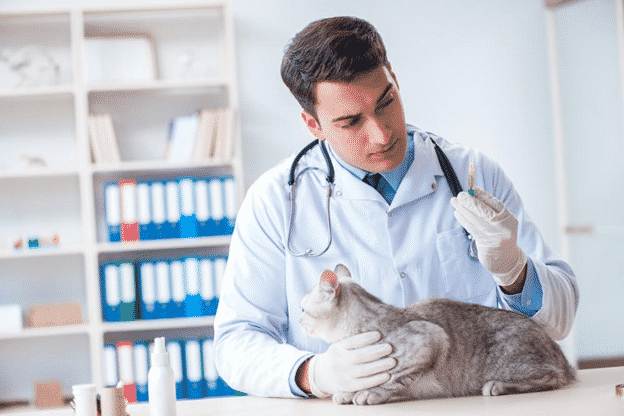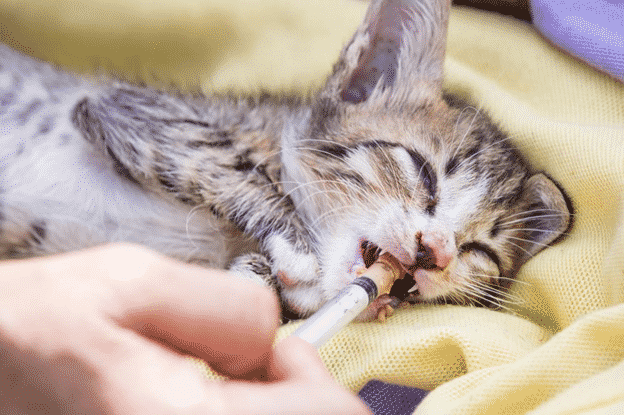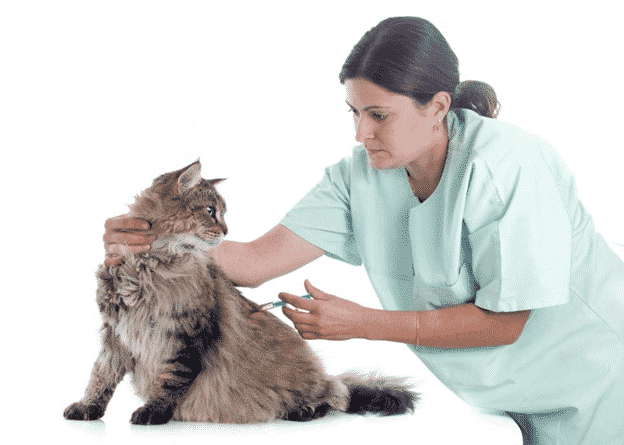

8 Common Health Problems to Watch Out For in Cats
" Have you recently adopted a cat or have been a cat parent for long? Read further to find out some common health concerns that you need to be mindful of if you have a cat!"
Cats make for one of the most adorable and caring pets. Even though your furry little feline might be great at self-maintenance, there are some common health issues that it can be very prone too. As a pet parent, one of your top priorities is to ensure that your pet is doing well. Therefore, it is imperative that you check your feline for these common cat health problems.
1. Vomiting
Vomiting is a common occurrence among the feline community, with a huge number of causes behind it. Some of the most popular causes of vomiting include, eating some poisonous, infection, diabetes, urinary tract infection, or hairballs.
The symptoms of this common cat health problem are fairly obvious, and often include abdominal heaving and drooling. Since vomiting can leave your kitty pretty dehydrated, you should take an appointment at the vet’s clinic right away!
2. Feline Lower Urinary Tract Diseases (FLUTD)
Another common disease that most cats tend to suffer from is the lower urinary tract disease (FLUTD). This is basically a collection of feline disease that occurs due to various causes. FLUTD occurs in both male and females cats, and usually affects those cats that are overweight or those that consume dry food. Moreover, a multi-cat household, stress, or any other sudden chances can increase a cat’s risk of catching FLUTD. The treatment of this disease typically depends on the kind of FLUTD your cat has.
3. Fleas
Fleas are another very common occurrence that nearly all cats experience during their lifetime. In fact, most cats are either born with fleas or experience them shortly after their birth. Since it is such a common feline problem, it can be treated quite easily with the right medication. However, you need to first identify that your feline has fleas by looking out for these signs:
- Tiny black spots
- Continuous scratching
- Recurrent licking
- Irritated skin and redness
- Loss of hair
- Skin infections
Fleas can survive on cats for over a year, putting it at risk for anemia. Therefore, before the problem gets any more serious, you need to treat your cat’s flea concern and prevent future infestations.
4. Tapeworms

Tapeworms are another extremely common cat health problem. They live within the small intestine of your feline and often grow as long as two feet. Tapeworms are typically segmented and break further apart when they are expelled. So, the changes of seeing a full tapeworm are very low.
Sometimes the symptoms of a tapeworm infection and rather subtle and difficult to detect, but other times they may also include weight loss and vomiting. The simplest way to check if your cat has a tapeworm infection is to look at its feces. Keep a check around its anus and also its bedding as tapeworms tend to come out of your cat’s anus when it is sleeping or relaxed. If you spot any tiny white worms that look like rice grains, then those are probably tapeworms.
There’s a very high chance that your cat gets tapeworms due to swallowing fleas. Therefore, you need to ensure that you tackle any flea problem before moving ahead to handle a tapeworm infection. Generally, tapeworms aren’t that hard to treat. Some treatment options include injections, topical, and oral medication.
5. Diarrhea
Diarrhea in cats can occur as a result of various reasons such as spoiled food, allergies, cancer, infection, liver disease, and intestinal parasites. The symptoms of diarrhea include your cat passing a watery of liquid stool. Depending on the cause, diarrhea can last from a day up till a month.
If your kitty is suffering from diarrhea, you need to quite careful when it comes to feeding it and giving it something to drink. Make sure to keep providing your feline with clean and fresh supply of water as diarrhea can be dehydrating. Avoid giving your cat food for no more than 12 hours. After this, if your pet still has diarrhea, or you notice that its vomiting is dark, it has a bloody stool or suffering from lethargy or fever, you should immediately take it to the vet.
6. Eye Problems
Eye problems are another common health concern in cats that are caused by various things such as corneal ulcer, glaucoma, conjunctivitis, cataracts, inflammation and viruses. Your cat will exhibit a few symptoms in case it has eye problems such as watery eyes, white or red eyelid lining, squinting, pawing at the eye, etc.
You can’t know the exact reason behind your cat’s eye problem and therefore, you can’t treat it yourself. Eye problems are a quite serious concern so you should contact your vet immediately.

7. Kidney Disease
Kidney disease can be a major treat to your feline’s health. Since kidneys play such a vital role in the effectively functioning of your cat’s body, if failing kidneys are left untreated, it can also result in death. Older and outdoor cats typically have a high chance of developing kidney disease in comparison to a young, indoor one. If your cat has kidney disease, it means that 75% or more of their kidney tissue is unable to carry out its filtering function, resulting in terrible problems for your kitty.
8. Dental Disease
Gum disease, also known as periodontal problems, occur when plaque grows on the surface of the teeth. If this plaque isn’t properly cleaned from your cat’s teeth, it will turn into tartar, which can be very hard to remove. Moreover, oftentimes, the tartar can penetrate under your cat’s gum, causing serious infection. If this infection isn’t controlled in time, your cat could end up losing teeth. Your cat’s diet plays a major role in keeping its teeth healthy. So, make sure to give your cat a supply of dry and canned food to help keep its teeth clean.
Conclusion
Just like all other animals, cats can suffer from various diseases too. As a pet parent, you need to watch out for any symptoms and potential signs of danger to prevent any further health damage and ensure that your pet’s health gets back to normal as soon as possible!
Discover how to create a joyful, healthy home for your pet.
Subscribe to your weekly rundown of practice, real life ideas and training tips straight to your inbox.


